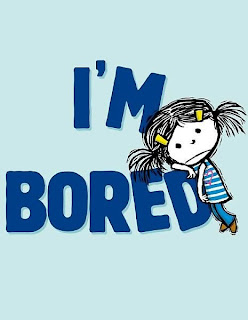You know that feeling when you find a book and you just know it's going to be perfect? I knew this book would be perfect before I opened it. I kept the book at home to read with my girls instead of taking it to school this morning. After dinner, I snuggled up on the couch and re-read the book to myself. As I read, memories of my own great-grandfather consumed my thoughts.
This story is written in dialogue and tells the story of a great-grandfather sharing memories with his granddaughter. The little girl is visiting her grandfather when he advises her to, "Pick whatever you like the most." "Then I'll tell you its story." She chooses a cigar box full of matchboxes. Her grandfather collected items as a small boy growing up in Italy. He could not read or write but his mementos held special memories for him. The grandfather and granddaughter recount the memories that each treasure in the matchboxes holds. The granddaughter learns of her grandfather's immigration to the United States and how he was finally able to go to school to learn to read and write. He even became a printer and printed the written word in newspapers.
Inside spread from The Matchbox Diary written by Paul Fleischman and illustrated by Bagram Ibatoulline and published by Candlewick Press.
This story brought my Great-grandpa Key's story home to me. I called my Grandma Parmenter immediately after reading the story so she could re-tell his story to me. Just like the grandfather in the story, my Grandpa Key came to America as an immigrant. My Grandpa Key's dad came to America before the rest of the family to lay the foundation for a better life. Grandma told me that grandpa, his five brothers, and his mom had to sail at the bottom of the boat where the quarters were very cramped, just like the young boy in this story. The picture that hit home the most for me was the picture of the little boy looking out at the Statue of Liberty. My grandpa Key's name is etched on the wall at Ellis Island and I can imagine him traveling the same route (although he was too young to remember). The grandfather in the story tells of having to have your eyes checked when you get to America to be sure you are well. Grandma told me that my Grandpa Key was very sick and only two years old when he set sail for America. His family in England encouraged his mother to, "Leave him in England to be buried instead of being buried at sea." I'm glad my Grandpa Key came to America. I'm glad his story can be told and that the author, Paul Fleischman so beautifully helps to retell my grandpa's story as well as so many other immigrants that have and do travel to America for a better life.
Personally, I think this story lends itself to being used with younger children. Even my own daughter, at four years old, has so many stories to tell. She cannot read or write yet, but boy can she tell a story! I think this book would be a great book to use at the beginning of the year to introduce your writing workshop and the idea that everyone has a story tell even if they cannot write the words on paper yet. It also opens up the discussion that your students will be able to write their stories down soon as they will be learning to read and write just like the grandfather in the story.
I read the story to my girls tonight. Emma Kate ran to her room right after reading the story and grabbed her Souvenir Shoebox that she created last summer.
She couldn't wait to share the small items that she collected in her shoebox. This was a summer project that was assigned by her 4th grade teacher the summer before entering 4th grade. Each item had to fit in a shoebox and tell something about her summer vacation. This was a great way for Emma Kate to remember her summer memories and she also brought her box to school at the beginning of the year so she would start off with plenty of writing ideas for her writer's notebook!
Leia thought about what she had to share for a moment. Then, she jumped up and grabbed her baptism box from under her bed. We pulled out one item at a time and told the story to go with it.
On the phone, my grandma also had a great idea to use with the book. Of course she did...she's taught all of her life! She said you could have your students interview their grandparents about special mementos that hold stories from their lives and share their stories with your class.
Candlewick Press offers more extensions for the book here in their Teacher's Guide.
So many great ideas! What would you do with the book?
Post a comment and share your thoughts.




































